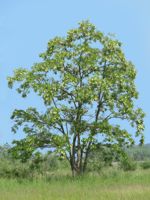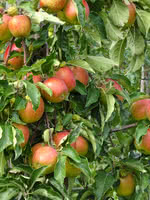Mon-Fri 9am - 5pm Mountain time
Black Locust vs Fall Red Apple
Robinia pseudoacacia
Malus Fall Red
NOT AVAILABLE THIS SEASON - MIGHT RETURN
Black Locust is an attractive tree. Its distinctive leaves are made of about a dozen bright green leaflets. It also notable for its fragrant white flowers, which smell of citrus.
Black Locust can grow in many situations, but prefers dry areas with lots of sun. It is robust and is an excellent choice for establishing shade in dry, open areas.
Important note: Much of the Black Locust is toxic to humans and livestock, including seeds, bark, and leaves.
The Fall Red Apple produces large ruby red apples with white flesh that are crisp and sweet. This delicious fruit is great for fresh eating or baking, with a good storage life. Its showy clusters of white flowers in spring add fragrance and beauty to your garden or yard.
Like most apples, the Fall Red apple will produce fruit on its own, but can benefit from another variety of apple (such as Prairie Sensation Apple) for cross pollination. It is a disease resistant alternative to the McIntosh Apple.

